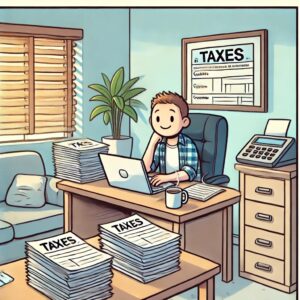By: Kylie Ora Lobell for SHRM, Photo by Alex Kotliarskyi on Unsplash
Kirsty Senior has been in HR for more than a decade, and she has seen a lot of employees grapple with distractions—specifically smartphones and social media—at work. Now, as the co-founder of CitrusHR, an HR consulting firm in England, she reflected on what strategies have worked for getting employees to focus.
“The most successful thing I have seen is designing a workplace that allows people to be agile and work where the current task best suits,” she said. “But also, [you need to be] smart about where people are positioned in the office. If people are easily distracted, then putting them in a more visible place will mean it is harder for them to get caught up on instant messaging or Instagram without colleagues noticing. Some organizations will have security reasons why smartphones are not allowed in the office, and being clear about that is vital.”
The Loss of Concentration and Focus
Senior is among many HR professionals and business leaders who are doing their best to get employees to concentrate on work. But as author and Georgetown University professor Cal Newport points out in his book Deep Work: Rules for Focused Success in a Distracted World (Grand Central Publishing, 2016), this isn’t so easy. Newport argues that deeply focusing on one task at a time is the key to truly being productive, but our attention is constantly being diverted by the distractions that Senior noticed.
For instance, technology has now contributed to humans having an average attention span of only eight seconds. In the year 2000, our attention span was 12 seconds long, which means that it has steadily declined over time.
Multi-tasking, which was once touted as a best practice in our fast-paced economy, has now been found to reduce intelligence and hinder productivity. In one study during which people who were and weren’t multi-tasking were given a comprehension test, the ones who were multi-tasking received scores that were 11 percent lower than the scores of those who were not. If you’re sitting near a multi-tasker in an office setting, your own comprehension could decrease by 17 percent. Another study found that if you’re multi-tasking, you could squander up to 40 percent of your productivity.
The evidence is compelling: Being focused on a task, or in a “deep work” state of mind, is much more efficient—if you can get there. “When you concentrate, you give whatever you’re working on your full attention,” said Dana Case, director of operations at MyCorporation, a startup-consultation business in California.
“This helps you be more productive overall and avoid making simple mistakes and errors that could otherwise come up if you’re distracted. Employees that fully concentrate are able to do their best work, which makes for the best possible employee.”
Though focus is important, how does this work in a modern office, where bosses can be demanding, social media is tempting, Slack and e-mail messages are expected to be answered promptly, workers eat lunch at their desks and companies are embracing the open office design? These experts have some tips on how to create a deep-work environment that will improve productivity and increase overall employee well-being.
1. Allow for flexible schedules.
While 9 a.m. to 5 p.m. (or more like 9 a.m. to 7 p.m.) is the typical workday schedule these days, it doesn’t work for everyone. When you’re trying to get employees to focus, consider allowing them to work on their own schedules, said Jennifer Donnelly, senior vice president of human capital for The Segal Group, an HR and benefits consulting company in New York.
“Some people work best in the early morning, while other people can crank out work into the late hours of the night,” she said. “Encourage employees to take breaks and reward themselves for dedicated times of focus.”
Thankfully, Donnelly pointed out, more companies are providing telework and flexible work arrangements and reaping the benefits, since remote workers are more productive, take less sick leave and fewer breaks, and quit less often.
“Employees that are disciplined and don’t need a lot of structure and direction excel in this environment and consider the flexibility to manage their own time and schedules a great benefit,” she said.
2. Consider modifying your open office plan.
Though the current trend is to have an open office plan, where employees can, ideally, brainstorm together and have impromptu meetings, this can be detrimental to employees’ ability to focus. Before deciding on an open floor plan or remodeling your office, survey your workers, suggested Baron Christopher Hanson, lead consultant and owner of RedBaron USA and Baron Christopher Development, a design business in South Carolina.
“Take the time to interview your employees and executives, then do the math to architecturally focus on how they focus. Deeply consider their responses before you design a custom workplace.”
In addition to your open office, have small, quiet spaces where employees can go to really focus on tasks such as talking on the phone, intensive negotiating or drafting long e-mails, Hanson said. “Chitchat, exterior noise or a loud co-worker can wreak havoc on a workplace if you don’t have everyone honestly answer a simple questionnaire about how they best focus.”
Too much activity can also make employees’ brains start to wander, so, Hanson said, “never combine noise and eye contact. In [an] open space, try to situate desks and views so visual distractions don’t compound with noise.”
Some employees may even focus better when they are sitting next to noisy colleagues in an open office situation. It’s all about finding out what works best for your employees and implementing it, according to Leesa Schipani, a partner at KardasLarson Human Resources Consulting in Connecticut.
“Concentration is important for many tasks like analysis or content development. By creating open spaces, quiet spaces and relaxing spaces, employees can choose where to work for the concentration level they need.”
3. Ditch the bad lighting.
While dim lighting can cause employees to feel tired, harsh lighting can result in a lack of focus. When designing your office, carefully considering the lighting is critical, said Jennifer Gaggion, interior designer/principal at Design Your Monday, a corporate interior design company in Connecticut.
“While often overlooked, lighting can greatly influence mood and productivity in the office. Bright lighting may be stimulating but can also cause headaches if an appropriate wattage is not used. Softer white lighting can be used to create a calmer mood or library-type environment for employees to get reprieve.”
4. Allow employees to personalize their own spaces.
Employees need to be able to set up an environment where they can focus. Giving them the opportunity to bring in personal items and decorate their desks contributes to their productivity, as well as their happiness.
“Many of our employees have Himalayan salt lamps on their desks,” Case said. “Others listen to ambient music on their earbuds. One of our employees has turned her desk into a truly calming shrine, with crystals, an oil diffuser and a salt lamp.”
Donnelly said that, in her office, she sees that “some employees will respond best to personal touches, such as pictures of their family to remind them of their ‘why,’ or a positive, inspirational quote that will keep them going.”
5. Make sure managers lead by example.
Employees will follow in their managers’ footsteps. If managers are constantly distracted, this will signal to employees that it’s OK to act the same way. If managers are focused on their tasks at hand, this models good behavior to employees, according to Dana Goren, chief customer officer and vice president of human resources at Hibob, a people management platform company with locations in Israel, New York and England.
“If [managers] aren’t frequently checking their phones during the workday, then odds are their staff will pick up on the protocol,” Goren said. “They can also encourage team members to attend meetings without their cellphones and do the same so that others will follow suit. Managers should try to keep phones off to the side during meetings.”
6. Hold employee fun days.
When employees are always working and running around, they tend to burn out. Make sure you provide them with some rest and relaxation by holding enjoyable company gatherings. You’ll give them a chance to unwind and cultivate relationships with managers and co-workers, and you’ll increase company morale at the same time.
“Dedicate an employee as the company’s ‘fun manager’ as part of their responsibilities, and allow a half day per month for fun activities that allow employees to relax and prevent burnout,” Donnelly said. “A company ‘Olympics,’ a beach day, a taco Tuesday, volunteer events or cooking classes help keep employees in a positive frame of mind and inspire them to take work seriously for themselves and for the larger team.”
Read the original article here. Sign up for our newsletter here.




